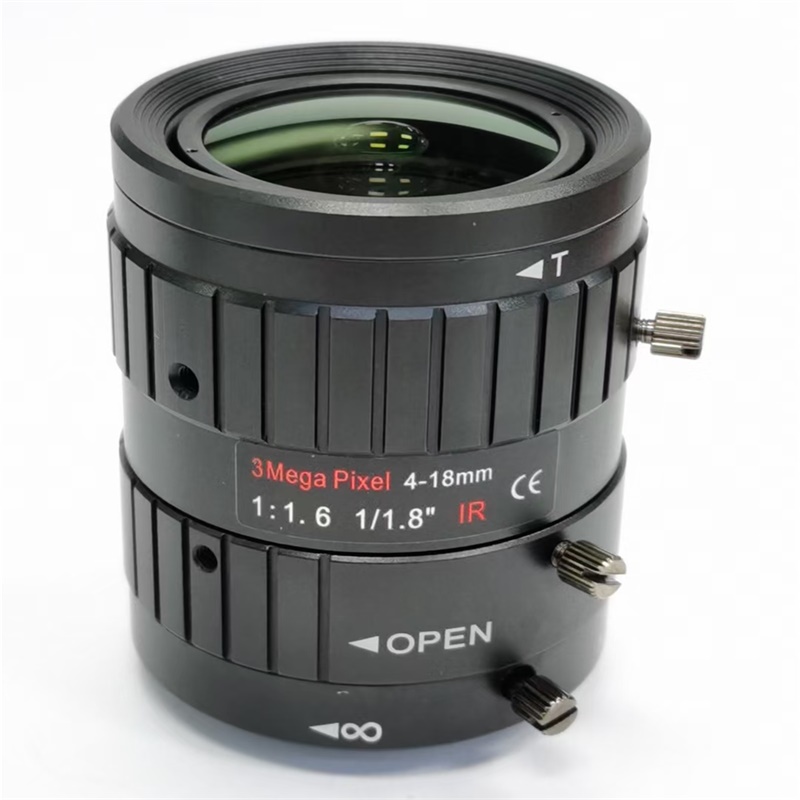Dear Customers and partners,
in these series technical articles you can learn some important and useful knowledge regarding to how to choose machine vision lens, how to finalize machine vision lens, what you should consider carefully when you face so many various lens, this is first article
Lens as the eye of machine vision system, in the whole machine vision system design it located in the core important position, lens is an important imaging component of image acquisition, many users in the system design often do not pay enough attention to the choice of lens, resulting in the failure to get the ideal image, or even lead to system development failure. Therefore, the correct choice of machine vision lens directly affects the entire machine vision system.
Lenses are an important component of image acquisition throughout the inspection process, so the correctness of industrial lens selection is critical. There are main points that need to be confirmed first:
1, system motion or still: speed and slow will affect the position of the photo offset and lead to distortion of the captured picture;
2, machine vision lens working environment and sample size;
3, the installation space has restrictions: industrial lens size, length and other parameters;
4, whether to add light source on the lens: according to the field environment and target imaging effect, choose the right light source;
5, the spectral response has special requirements: for example, for ultraviolet environment, ordinary glass lens will absorb almost all ultraviolet light;
6, whether there are other special components;

According to the scene environment and actual needs of the shooting object, consider whether you need a lens with a larger depth of field. For example, some detection or measurement must be at a certain angle to the industrial camera, and the entire object is required to be imaged clearly; the measured target is not on the same plane, which requires consideration of the depth of field of the lens. The shorter the focal length, the greater the depth of field; the smaller the aperture, the greater the depth of field; the farther the lens is from the object, the greater the depth of field. A small aperture and good light make focusing easier, but a small aperture will lose the fine structure of the object. The larger the pixel of the camera chip, the greater the depth of field.
A few technical parameters of industrial machine vision lenses
1. Maximum frame rate/line frequency: The rate at which the camera collects and transmits images. For area scan cameras, it is generally the number of frames per second, and for line scan cameras, the number of lines per second.
2. Resolution: The number of pixels that the camera collects each time. For digital industrial cameras, it is generally directly corresponding to the number of pixels of the photoelectric sensor.
3. Pixel depth: the number of bits per pixel, generally 8Bit is commonly used, and for digital industrial cameras, there are generally 10Bit, 12Bit, etc.
4. Exposure mode and shutter speed: line-scan cameras are all line-by-line exposure methods, you can choose a fixed line frequency and external trigger synchronization acquisition mode, the exposure time can be consistent with the line period, or you can set a fixed time; Area scan industrial cameras have several common methods such as frame exposure, field exposure, and rolling line exposure. Industrial cameras generally provide the function of external trigger image acquisition. The shutter speed is generally up to 10 microseconds, and high-speed industrial cameras can also be faster.
5. Pixel size: The size of the pixel and the number of pixels (resolution) together determine the size of the camera's target surface. At present, the pixel size of industrial cameras is generally 3μm-10μm. Generally, the smaller the pixel size, the more difficult it is to manufacture, and the more difficult it is to improve the image quality.
6. Spectral response characteristics: refers to the sensitivity of the pixel sensor to different light waves. The general response range is 350nm-1000nm. Some cameras add a filter in front of the target to filter out infrared light. If the system needs to be sensitive to infrared This filter can be removed.
How to choose machine vision lens?
1. Chip size and camera interface: Choose the matching camera interface and chip size specifications. For example, the 2/3" machine vision lens supports the largest industrial camera rake surface of 2/3", which cannot support industrial cameras over 1 inch.
2. Depth of field requirements: For projects with depth of field requirements, use the smallest aperture as much as possible; when choosing a lens with a magnification ratio, use a low-magnification lens as far as possible under the project's permission. If the project requirements are more demanding, I tend to choose a high-depth lens.
3. Field of view, optical magnification and working distance: When choosing a lens, we will choose a lens that has a slightly larger field of view than the object to be measured to facilitate motion control.
4. Installation environment: According to the needs, pay attention to the cooperation with the light source, and select the appropriate lens.
Vehviscam manufacture limited www.Vehviscam provides various kinds of portable mini industrial USB Camera for embedded vision system and other commercial and industrial security applications, welcome to view more online or contact us